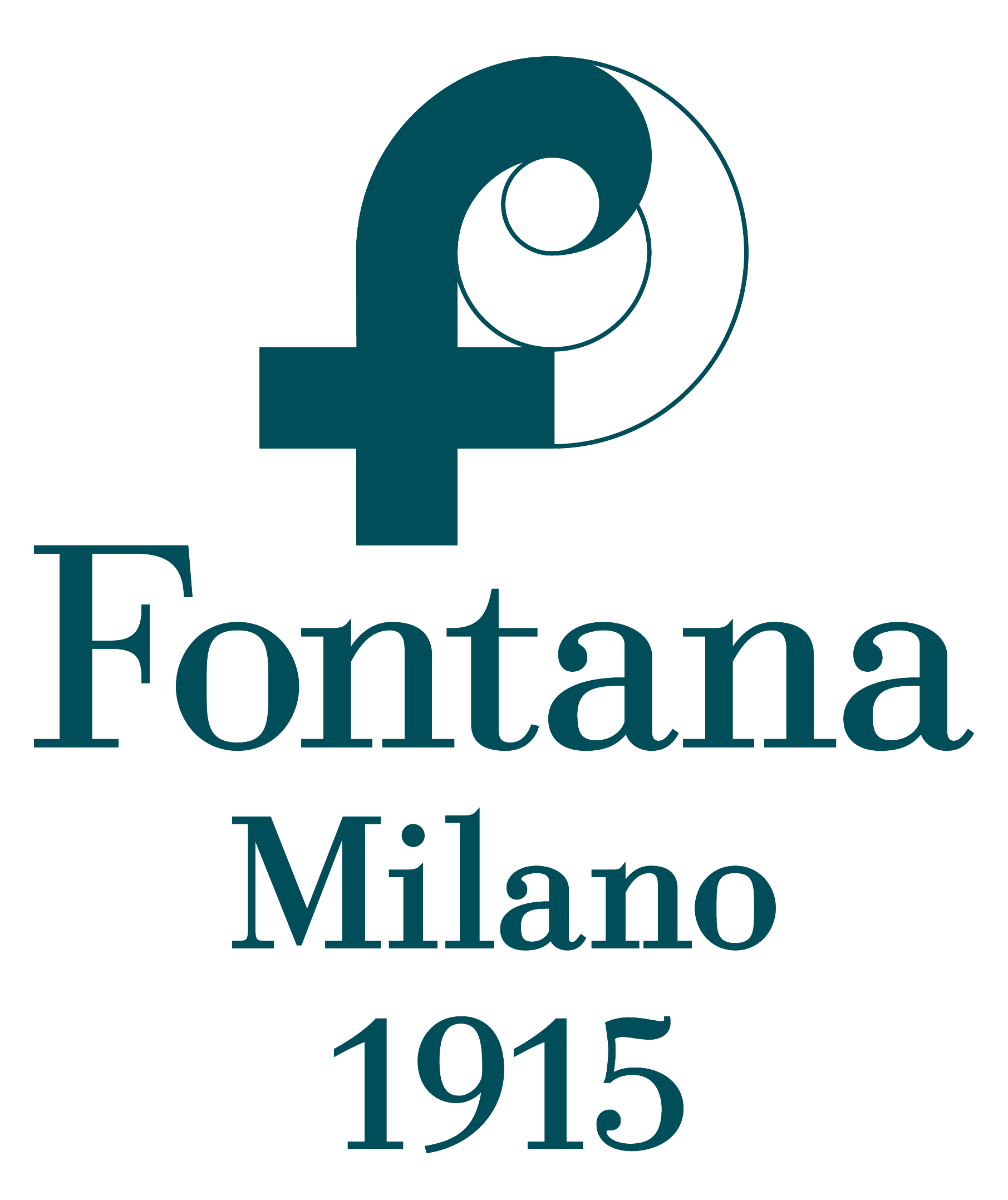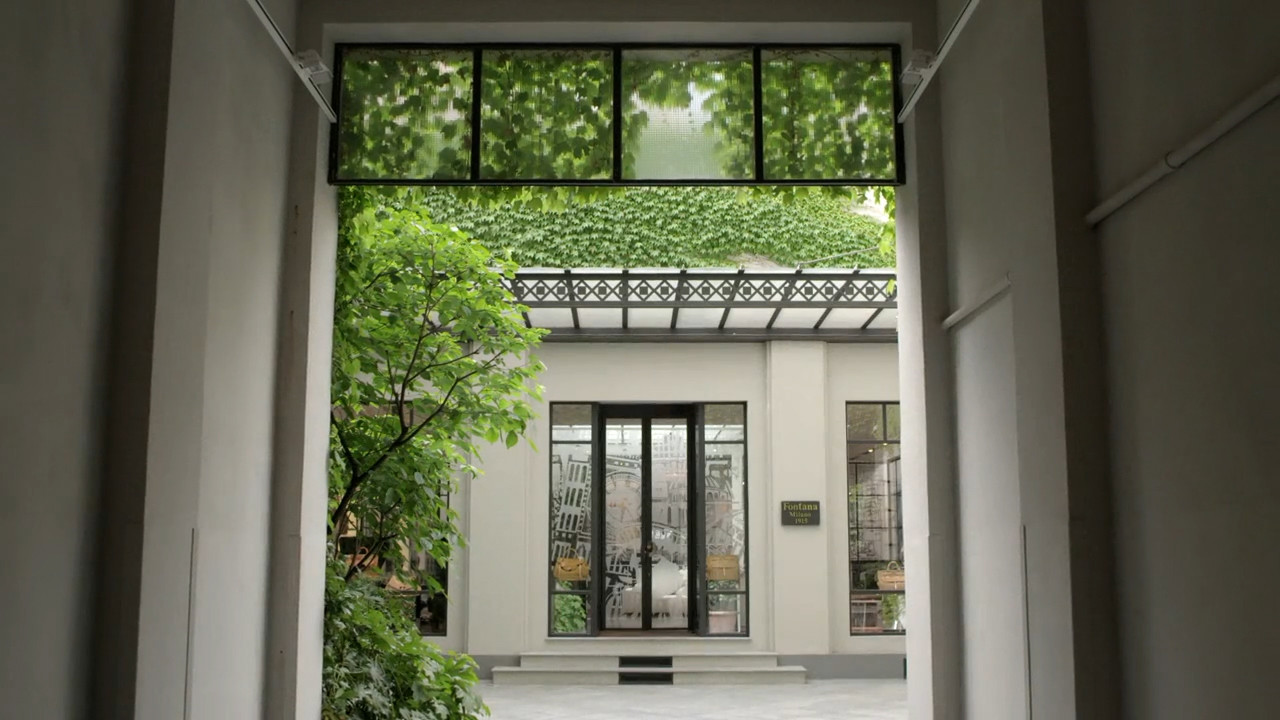Silvia Massa designed the Fontana Milano 1915 workshop as a single-themed store for exclusive leather goods. An open laboratory where bags can be admired, as they are created, in real-time. A secret address in an eclectic and mysterious déco Milan.
At the heart of this project is a window. This offers a transparent and bright vision of a glass cube that contains the distinctive line of the Fontana group. It is protected by a “casket” and is repeatedly made prominent by the graphic pattern of the Metropolis bag, which takes centre stage in a most prestigious collection.
This is combined with examples of contemporary design, such as the Foggini chandelier, the extra wall sofa by Dissoni, the Bishop stools by India Mahdavi and the exposition elements in flexiglass and Corian by Silvia Massa.
This window expands in dimensions that are multiplied by tricks involving mirrors, colours, volumes and forms which confuse and intrigue the visitor at the same time.
It is a store within a store, a maximalist “see through,” where even the entrance is made more lively by the natural green space tended by Enrica Martina. The same is true of both the interior and the entire structure, which is characterised by geometric rigour. This is reminiscent of the industrial architecture of London of the 1930s and of Vienna at the start of the 20th century.
From the Bloomsbury Group of the sisters, Virginia (Woolf) and Vanessa (Bell), to the Omega Workshops of Roger Fry, the references are endless. And, among hand-made porcelain mosaics and vertical vegetation, and a fountain which recalls the sounds and memories of that era, is a garden rooted in earth and memory.
Externally, you can see an exhibition corridor which evokes the Parisian passages of the early twentieth century.
This crosses the entire store, appearing between interiors and exteriors, as in a further level. This is skilfully separated by a thin glass membrane and micaceous iron, which further emphasises the “full” and “empty” effect mirrored in the tonal counterpoint of the peonies. These flowers, which were arranged by Fornasetti, specularly cover the walls of the Fontana Workshop.
Created with materials with ancient and natural roots, the store mixes eastern and western ideas with elegant and poetic quotations, proposing genuine structural and decorative inventions. Here every detail (like the wingback chair by Tom Dixon or the table and poufs by Saarinen, which are positioned on the precious antique oak parquetry flooring by Victorian Woodworks) helps create the unique context of great respite and contemporary relevance.
On the internal front, an open laboratory is revealed: a craftsman works with leather, creating accessories in the making, immersed in a genuine work of art.
The mural work by the artist Charlotte Mann (who is a personal friend of the designer) completes the overall picture with a background which represents the laboratories of the past, reinterpreted in a contemporary key rich in precious details, of fine features in black and white.
Respecting tradition does not mean repeating the old and the obvious, but reinterpreting the past, in the present.

